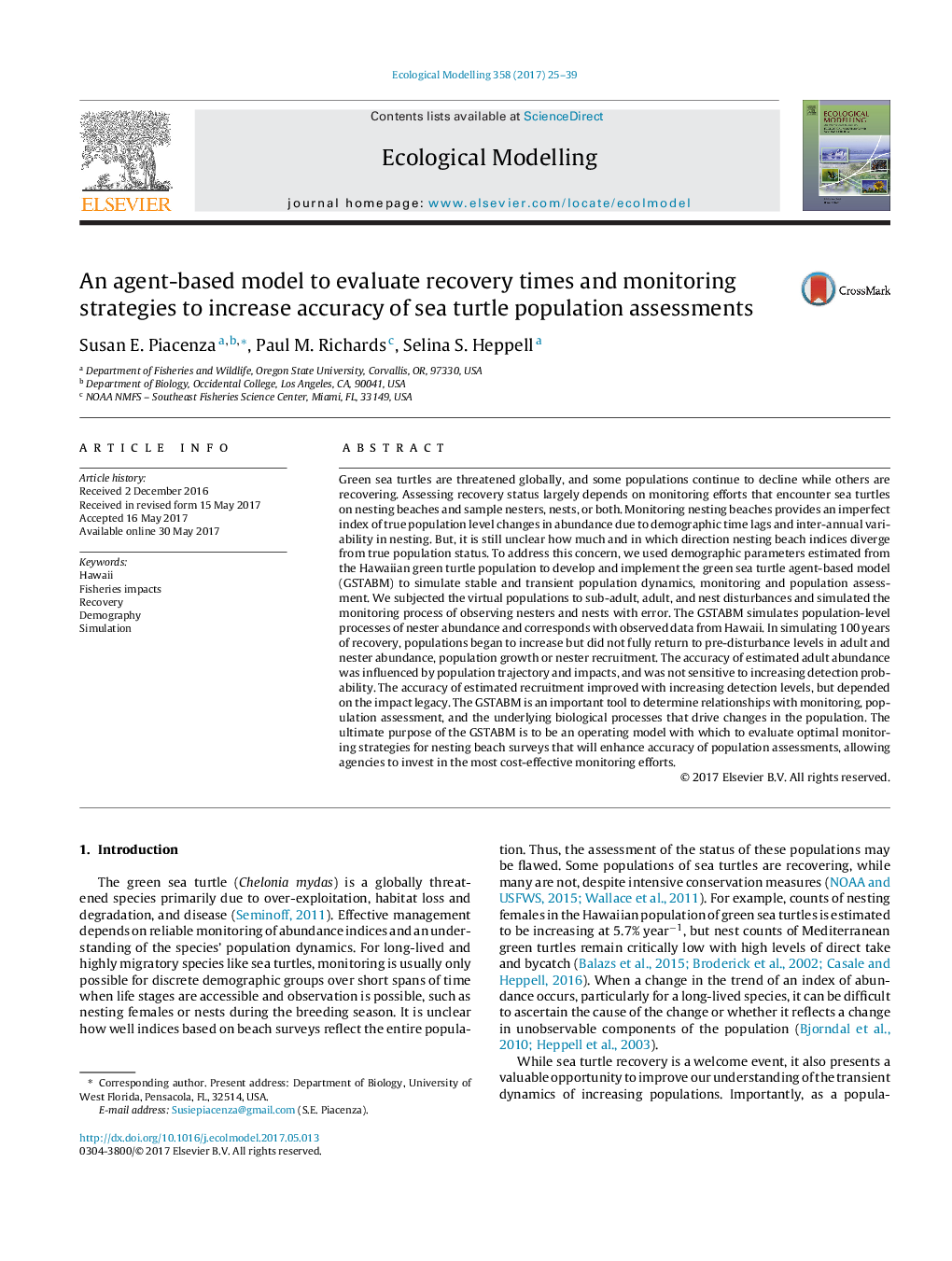| Article ID | Journal | Published Year | Pages | File Type |
|---|---|---|---|---|
| 5742086 | Ecological Modelling | 2017 | 15 Pages |
â¢The Green Sea Turtle Agent-Based Model (GSTABM) is a biologically complex and realistic model.â¢Simulated populations take over 100 years for complete ecological recovery.â¢Adult abundance and nester recruitment are poorly estimated from nesting beach data.â¢Optimal monitoring strategies can be developed with the model and agency consultation.â¢GSTABM can be adapted to other sea turtle species and endangered and recovering species.
Green sea turtles are threatened globally, and some populations continue to decline while others are recovering. Assessing recovery status largely depends on monitoring efforts that encounter sea turtles on nesting beaches and sample nesters, nests, or both. Monitoring nesting beaches provides an imperfect index of true population level changes in abundance due to demographic time lags and inter-annual variability in nesting. But, it is still unclear how much and in which direction nesting beach indices diverge from true population status. To address this concern, we used demographic parameters estimated from the Hawaiian green turtle population to develop and implement the green sea turtle agent-based model (GSTABM) to simulate stable and transient population dynamics, monitoring and population assessment. We subjected the virtual populations to sub-adult, adult, and nest disturbances and simulated the monitoring process of observing nesters and nests with error. The GSTABM simulates population-level processes of nester abundance and corresponds with observed data from Hawaii. In simulating 100 years of recovery, populations began to increase but did not fully return to pre-disturbance levels in adult and nester abundance, population growth or nester recruitment. The accuracy of estimated adult abundance was influenced by population trajectory and impacts, and was not sensitive to increasing detection probability. The accuracy of estimated recruitment improved with increasing detection levels, but depended on the impact legacy. The GSTABM is an important tool to determine relationships with monitoring, population assessment, and the underlying biological processes that drive changes in the population. The ultimate purpose of the GSTABM is to be an operating model with which to evaluate optimal monitoring strategies for nesting beach surveys that will enhance accuracy of population assessments, allowing agencies to invest in the most cost-effective monitoring efforts.
